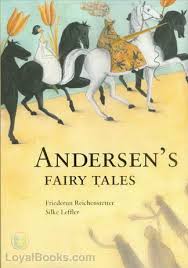The Story of a Mother
byThe Story of a Mother begins with a quiet desperation that clings to the cold air. The mother, drained from sleepless nights beside her sick child, watches as life slips through her hands. Death arrives not as a terrifying force, but in the gentle disguise of a weary old man, asking only for warmth. When the mother’s eyelids close in exhausted surrender, he takes the child, and the chase begins. Her journey is not fueled by strength but by love deeper than instinct. She follows Death through the night, begging each force of nature she encounters for direction, enduring their painful tolls in exchange for guidance.
Night asks for the mother’s eyes, and she offers them willingly, losing her sight but gaining direction. A thornbush demands her blood and flesh, and she presses herself into it, leaving behind torn skin and resolve. At the lake, she must cry tears so pure they become pearls, payment for passage across its cold waters. These trials aren’t physical alone—they reflect the rawness of a love willing to destroy itself for a child. Her suffering becomes her currency. When she reaches the house where Death tends his garden of souls, the cost of entry is her hair, a symbol of her youth, beauty, and identity. With nothing left to offer but love, she faces the final choice.
Inside the greenhouse, each plant represents a soul. The mother searches desperately for her child, recognizing it by instinct alone in a fragile flower. Death reminds her that all souls are equal, and removing one affects the fate of others. She tries to seize the child’s plant, only to be met with a vision in the water—what her child’s future might hold. The vision isn’t one of certainty, but of potential: pain, joy, suffering, and redemption mingled together. This vision breaks her will, not from weakness, but from wisdom. She can no longer demand certainty in a world built on unknowns.
With her final act, the mother gives up control. She no longer begs to reverse fate but instead prays that the child’s life be governed by the divine—whatever that may bring. Her surrender is not defeat but the truest form of love: letting go when grasping tighter would only bring harm. In doing so, she finds peace not in answers, but in acceptance. The story ends not with triumph, but with transcendence. She has given everything but gained the wisdom that not all love means holding on—sometimes it means releasing what we cherish most.
This tale remains one of Andersen’s most deeply human stories. It moves beyond simple fairy tale tropes to portray grief in its rawest form. Through myth and metaphor, he explores the agony of motherhood, the cruelty of fate, and the difficult beauty of surrender. The narrative reminds us that love does not conquer death—it honors it with grace and reverence. The mother’s suffering is not wasted. It becomes the very thing that elevates her spirit above despair, offering the reader a quiet but profound truth: even in loss, there is love, and in love, there is hope.
Modern readers might see this as more than a story—it is an emotional map of grief, written long before psychological language made it familiar. The journey is allegorical but painfully relatable to anyone who has feared for a loved one’s life. The way Andersen structures her path—through pain, vision, loss, and choice—mirrors real stages of emotional reckoning. The tale becomes a spiritual trial, one that suggests the hardest decisions are those that ask us not to fight harder, but to trust more deeply in what we cannot know. That lesson is enduring, and that’s why this story still resonates.

